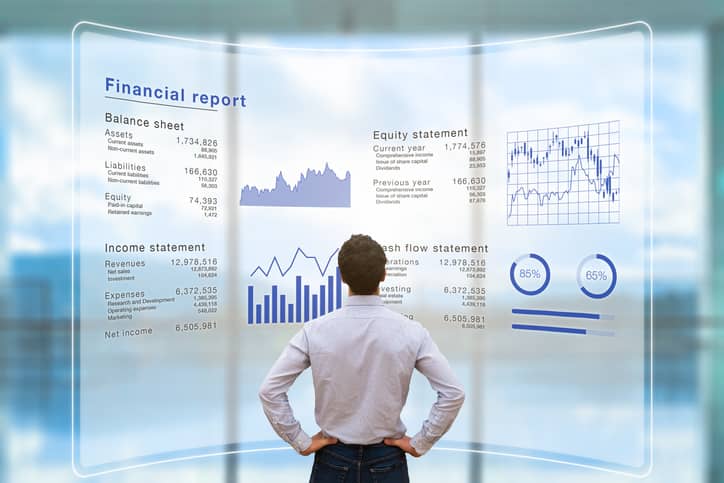Cash flow is the lifeblood of every business, but over 90% of organizations across Europe, the Middle East, and African regions don’t have a transparent view of their cash flow. Unfortunately, North and South America aren’t in a much better position.
Worldwide, companies don’t know how much money they are losing on a daily basis. Yet, at the same time, they are expected to make accurate financial decisions and projections.
The good news is that technology can help. For example, cash flow modeling is the best way for businesses to track, understand, and forecast their financials.
What is cash flow modeling?
Cash flow modeling is simply the act of planning and forecasting your income and expenses. Depending on the size of your organization and operations, cash flow modeling can be a complicated or straightforward affair.
Regardless of how big your business is, modeling is difficult to do by hand. Not only do spreadsheets offer little in terms of understandable visuals, but you have to educate everyone on your team on how to use and update it. One simple mistake can completely skew the numbers. To make matters worse, it’s difficult, if not impossible, to track human error. Furthermore, spreadsheets are rarely scalable. As a result, most organizations have to find new solutions as their business grows.
Different SaaS platforms offer the ability to track, plan, and model your cash flow to varying degrees. The basic information needed to start a cash flow model is as follows:
- All current and potential income sources
- All expenses, including payroll and employee benefits
- Shares, investments, and dividends
- Debt and other loans
You’ll also want to know how often income streams payout when you need to pay your bills. Again, keep in mind that the more granular you define your expenses and income, the easier it will be to model your forecasts.
The benefits of cash flow modeling
As you can imagine, there are many reasons why companies may choose to invest in cash flow modeling software. Since over 80% of businesses fail due to a lack of cash flow, spending time on cash flow modeling is a no-brainer. In addition, the ability to forecast the results of different cash flow scenarios quickly provides a window of insight into how you run your business.
Some additional benefits related to cash flow modeling include:
- Transparency- First and foremost, if you are cash flow modeling, you are likely to discover gaps in visibility. Modeling often reveals where every cent is coming in and being spent.
- Better decisions - Since you have greater transparency and visibility due to tracking your cash flow, you’ll also be able to make more accurate decisions regarding budgets, scaling, and investments.
- Improved project budgeting - Through modeling, you can determine how much you can afford to allot to specific departments and initiatives because of its ability to forecast the return on those investments.
- Recognizing new opportunities - Cash flow modeling can also help you determine potential growth opportunities and locate where you generate the most revenue.
- Audit trail for M&A - With the right software linked to your cash flow model, you can create a trail that can be used for audits and M&A reports.
The sum of all these benefits comes down to two things: being able to accurately view your business finances and the ability to answer critical, high-level questions.
When you can model your current finances, potential budgets, expenses, and ROI on a granular level, you can leverage your resources efficiently and proactively. At the same time, you can better analyze potential risk areas, adjust for inflation, and create contingency plans.
How to begin modeling your cash flow
Traditionally, the primary way for business owners and finance teams to model their cash flow has been to invest in creating elaborate spreadsheets. The problem has been that these sheets are nearly impossible to maintain in the long term, and it’s even more challenging to visualize the data. Furthermore, this manual method is time-consuming and essentially transforms finance and accounting workers into data entry professionals. The good news is that organizations no longer need to rely on manual processes.
Since keeping track of cash flow is a repetitive task, it can be easily automated. When you automate the collection and analysis of data, you can shift your focus to that of viewing high-level tasks and decision-making. Moreover, you can do so with a greater degree of accuracy than you could otherwise.
To find reliable cash flow modeling software, you’ll want to ask the following questions:
- How customizable is it?
- What kind of visuals does it provide?
- What kind of filters are available?
- Is the software responsive and built with machine learning technology?
Technology is an essential part of every automation tool. A platform that uses predictive analytics, machine learning, and other AI technologies will not only save you time but also help improve accuracy and personalization.
The best way to scale
Through cash flow modeling, companies can accurately assess their income and expenses, discover growth opportunities like software financing, and keep an automated audit trail. The best part is that cash flow modeling doesn’t just give you a bird’s eye view. You are also able to keep track of every project and department.
At the end of the day, one thing is clear: Companies with control over their cash flow stay in business. Cash flow modeling is one of the best ways to understand your financials and forecast winning scenarios and investments.
About the author
Elena Leralta
Working as Foreworth’s Chief Financial Officer, Elena possesses a wealth of knowledge on business management and finance owing to her over 20 years of experience working in the financial sector.
More info →


What do you think? Leave us your comments here!